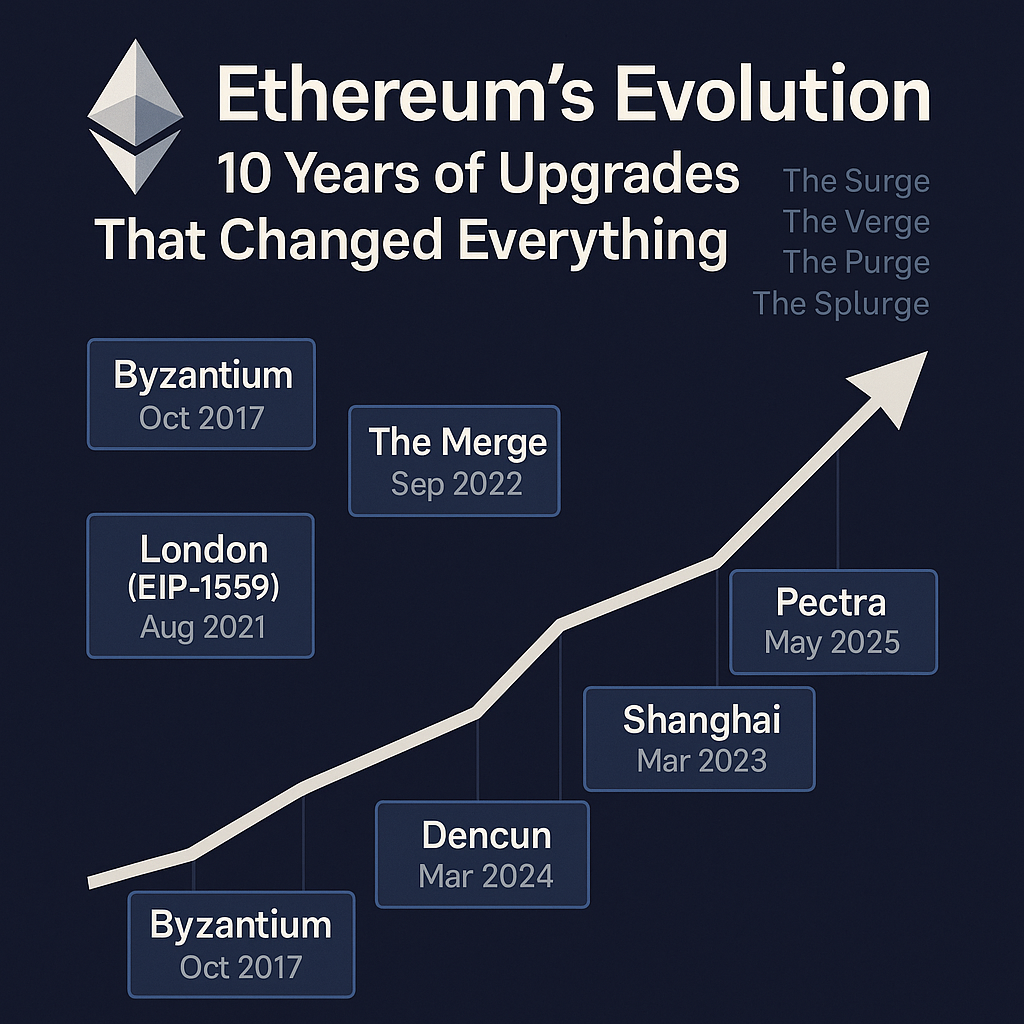Ethereum has been evolving for over a decade, transforming from a basic smart contract platform into the foundation of decentralized finance and modern web3 infrastructure. Understanding its major upgrades helps reveal not only where it came from but where it's going. Here’s a breakdown of Ethereum’s most important upgrades, simplified for any beginner who wants to follow the journey.
The first major upgrade, called Byzantium, launched in October 2017. It improved the performance, privacy, and scalability of Ethereum by introducing a set of technical changes known as EIPs. These included better cryptography support, cheaper contract execution, and more efficient verification processes. It also delayed something called the “difficulty bomb,” a mechanism designed to eventually phase out mining. This upgrade quietly laid the foundation for Ethereum’s future shift to proof of stake.
Fast forward to August 2021, Ethereum implemented the London hard fork, best known for EIP-1559. This was a game-changer. It restructured how transaction fees work, introducing a base fee that gets burned and a tipping system for faster inclusion. Instead of all fees going to miners, a portion is now permanently destroyed, reducing ETH’s supply over time. This marked the beginning of ETH becoming a deflationary asset and added more predictability to transaction fees.
In September 2022, Ethereum completed one of the most anticipated upgrades in crypto history: the Merge. This was the moment Ethereum officially transitioned from proof of work to proof of stake. It eliminated miners and replaced them with validators—people who stake ETH to help secure the network. The result was a dramatic 99.95% reduction in energy consumption. Ethereum became vastly more sustainable and ready for the scalability enhancements that proof of stake unlocks.
The next critical upgrade came in March 2023 with the Shanghai, or Shapella, update. This enabled users who had staked their ETH to finally withdraw their funds and any earned rewards. Prior to this, staking was one-way, which discouraged many from participating. By unlocking this capital, Shanghai boosted network participation and confidence in the long-term viability of staking as a secure way to earn yield.
In March 2024, Ethereum released its Dencun upgrade—short for Deneb plus Cancun. This upgrade introduced something called proto-danksharding, along with a new concept called “blobs.” These blobs are temporary chunks of data that help Layer 2 rollups—like Arbitrum and Optimism—store information more cheaply and off-chain. This drastically reduced gas fees for many applications built on top of Ethereum and is considered a major step toward full sharding, which will one day allow Ethereum to scale to thousands of transactions per second.
Looking ahead, Ethereum’s next major planned upgrade is called Pectra, which combines updates from Prague and Electra. Expected to arrive in 2025, Pectra will bring improvements to staking and wallets. It will let validators increase their staked ETH well beyond the current 32 ETH cap and will make externally owned wallets act more like smart contracts. This opens the door for smarter features, like built-in recovery tools or customizable permissions, improving user experience and security.
So where is Ethereum headed next? The roadmap includes four major phases: the Surge, the Verge, the Purge, and the Splurge. The Surge will introduce full sharding, allowing Ethereum to scale far beyond its current limits. The Verge will implement Verkle trees, which compress state data and reduce the cost of running a node. The Purge will remove historical data that's no longer needed, lightening the load on validators. Finally, the Splurge includes various small enhancements that fine-tune the protocol's usability and performance.
All of these upgrades share one goal: to make Ethereum more secure, scalable, efficient, and accessible. For builders and users alike, this means lower fees, faster speeds, smarter wallets, and greater reliability. Ethereum is steadily evolving from a global settlement layer into a fully scalable world computer—one upgrade at a time. Whether you're an investor, a developer, or just curious, understanding this journey gives you an edge in what might become the backbone of the next digital era.








